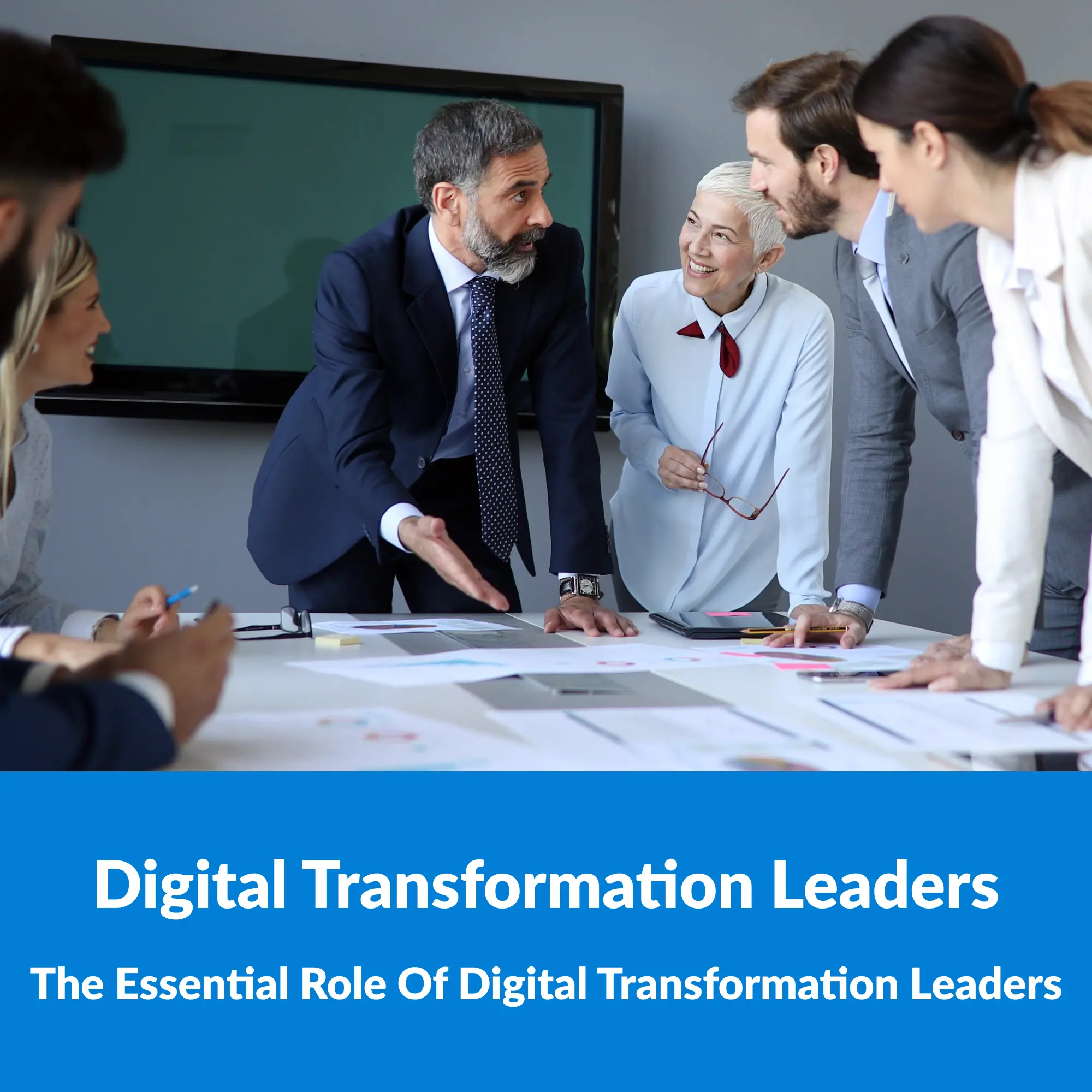How to ensure successful digital transformation? Many firms think that implementing SaaS technology to replace antiquated business processes or transferring workloads to the cloud is transformational. More profoundly, digital transformation incorporates technology into a company’s operations or mission, radically altering how value is given.
Despite being decades into the digital era, change projects still frequently fail. The key to your success is foreseeing potential hazards and avoiding them. These are the essential things you should know to make sure your digital transition is successful.
The Common Stories of Successful Digital Transformation
It’s critical to take a closer look at certain case studies to discover how businesses adjust to a new digital world.
IKEA
IKEA is the industry leader in furnishings. The business has accomplished this by adjusting to new working procedures. Recently, their digital adoption approach has assisted them in maintaining their competitive advantage over other businesses.
IKEA’s retail locations used to be significantly distinct from an online shopping site. But, online sales increased once they began to give their digital division of the company more attention.https://www.ikea.com/
Their physical locations now function more as fulfillment hubs than as retail establishments. Customers in some countries may now pay for their products without going through the checkout process.
Microsoft
Since the early days of personal computing in the late 1980s, Microsoft has been at the forefront of software innovation. But, as cloud-based software systems started to emerge in the early 2000s, their long-standing distribution approach all of a sudden felt out of date.
Microsoft had the option of acting like Blockbuster Video, the market leader. Instead, they wisely decided to modernize every aspect of their digital approach. They could already have been forgotten if that dramatic reform program hadn’t been implemented.
Nike
Nike, the industry leader in sportswear, is a prime example of the fantastic outcomes that digital transformation programs can provide. Nike has altered their whole strategy for branding, sales, and technology.
They are now concentrating on developing a strong direct-to-consumer brand, cutting back on their retail relationships, and doing more to generate online sales.
Groups like Nike Training Club gather thorough customer data and analyze the trends using cutting-edge analytics. Nowadays, smaller physical businesses work very hard to advertise the Nike name.
5 Criteria to Enhance The Successful Digital Transformation
People
Digital transformation begins with people, which serves as a great reminder that whenever we discuss data — especially meaningful data — humans are at the end of it. Most firms define the people’s side of change as their access to customers, clients, and personnel.
Data
If you want to extend your knowledge of customers and workers and reproduce it across a large business and in far more complicated and unexpected settings, you need data – easily available and retrievable recordings of encounters with consumers, employees, and clients.
Insights
Data may be converted into insights with the correct skills and tools. This is where technology gives birth to analytics – the science that enables us to make sense of data. We will be able to test this model through prediction to the extent that we have significant insights, a story, an idea of what may be going on and why, or a model.
Action
AI can make predictions, and data can provide insights, but the “so what” element necessitates action, and these actions involve the necessary skills, procedures, and change management. This is why skill is so important in unlocking (or even impeding) your digital transformation.
Results
You can analyze outcomes or influence at the end of the procedure. Nevertheless, this is not the final step; after evaluating the findings, you must return to the data. The results form part of the new, richer dataset, which will be enhanced and improved with the process’s discoveries.

Source: The Scalers
How to ensure successful digital transformation?
The following several suggestions will contribute to accomplishing a successful digital transformation:
Start with a plan and an approach that is outcome-focused
An essential component to ensure successful digital transformation is strategic planning that is outcomes-oriented. As these may be enormous projects, developing an outcome-based approach that outlines both the short- and long-term goals aids in concentrating attention on the transformational route.
| => You might need: Differentiate Digital Transition and Digital Transformation |
Choose the best talent with the desired result in mind
Creating a team with individuals who have complementary skill sets and overlapping domain knowledge can help the group become cohesive right away, ease communication, and speed up decision-making—all essentials in the current context of digital transformation.
Organizations frequently require the assistance of experts or entire teams to aid in the shift. The engagement approach in this case should be financially based on results rather than just cost basis.
Develop an adoption strategy
A transformation is only considered successful when people accept it and incorporate it into their regular workday. It can only then offer the benefits that were first promised. Users’ desire for revolutionary change and their ability to engage in it are strongly correlated.
Opus provides in-application assistance to effectively encourage user adoption and competency. When users choose the assistance format that best suits them while doing their duties, this helps shorten the time it takes to become proficient.

Source: Essential Designs
Address dated procedures and regulations
In any major business, embedded processes and rules control a substantial portion of operations.
To ensure that users feel at ease embracing the altered systems, make sure your team includes those responsible for predicting such consequences and obtaining changes to or approvals of rules and processes in advance.
Make sure that everyone in the organization is fully aligned
Alignment throughout the organization is crucial before starting a transformation journey and will greatly increase the likelihood of success. There should be support from the top down and an understanding that change frequently calls for a staged strategy and a long-term commitment.
This coordination across the organization will have an impact on stakeholders, from the C-suite down to the more direct contributors.
Be flexible and resilient in your actions
The success rate of using an agile methodology during transition is very high. You receive feedback from frequent, iterative, consumable releases that are immediately field-tested to determine whether your project plan is still on track.
This “fail fast” strategy informs you of any unexpected market shifts or technical advancements that could have more profound positive effects.
Notice and Common Digital Transformation Mistakes
Here are the most typical 7 pitfalls and notice in digital business transformation that you must be aware if you want to ensure successful digital transformation.
- Uncertain objectives
- Lack of IT expertise
- Insufficient leadership backing
- Customers are ignored
- Internal opposition
- Rejecting data
- Unrealistic timeframes
Let’s start with the first common mistake!
Uncertain objectives
One of the biggest causes of digital transformation failure is the lack of defined goals and objectives. Failure is more likely when the goal is not clearly defined and KPIs are not agreed upon.
Lack of IT expertise
Lack of IT knowledge or competence can seriously impede the process of digital transformation and endanger business through poorly synchronized digital planning.
Insufficient leadership backing
Digital initiatives must be applied everywhere, not only in a few teams or departments. So, senior management must fully support the digital revolution. If the leaders are not enthusiastic, engaged, and dedicated to transformation, the initiative will fail.

Customers are ignored
Many businesses that are undergoing digital transformation soon become obsessed with cutting-edge technologies and overlook the fact that the consumers are the key motivator for the change. These projects eventually fall short because they frequently concentrate on technology rather than taking into account the demands of actual people—the consumers.
Internal opposition
Traditional silos must be destroyed, and businesses must be restructured to adopt a digital culture. Nevertheless, it won’t happen immediately, and the company will fight any changes you try to make.
Rejecting data
When companies adopting digital transformation lose the enormous chance for success due to a failure to gain insightful knowledge from the data they are gathering.
Unrealistic timeframes
Setting firm dates for the digital transformation program will never be successful for any corporation since the change is a continuous process. Given how swiftly technology is developing, enabling genuine digital is a constant, slower process that might take months or years.

Final Words
In summary, the key word in digital transformation is “transformation,” not “digital.” Our world has evolved tremendously in the last two decades, and adjusting your company to these changes will not happen immediately, nor will it be accomplished merely by purchasing new technology or gathering more data.
What is required to ensure successful digital transformation is a transformation in thinking, culture, and talent, as well as upskilling and reskilling your team to ensure future adaptability.
With Opus, you can get insightful information on how your corporate IT stack is being used by users and teams, as well as requests for training. Making data-driven decisions on application updates and deployments is possible with the help of this extra business intelligence, which can be used to verify the ROI of corporate applications. Contact us today!





